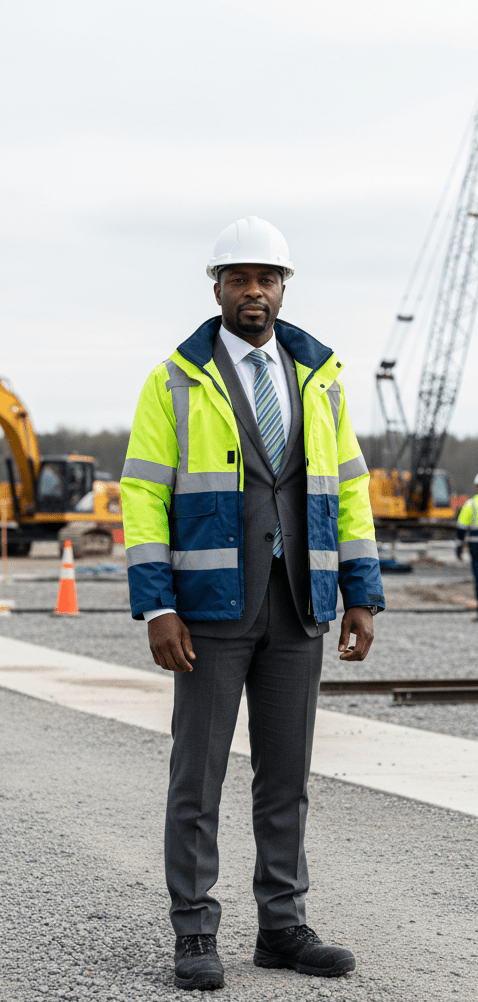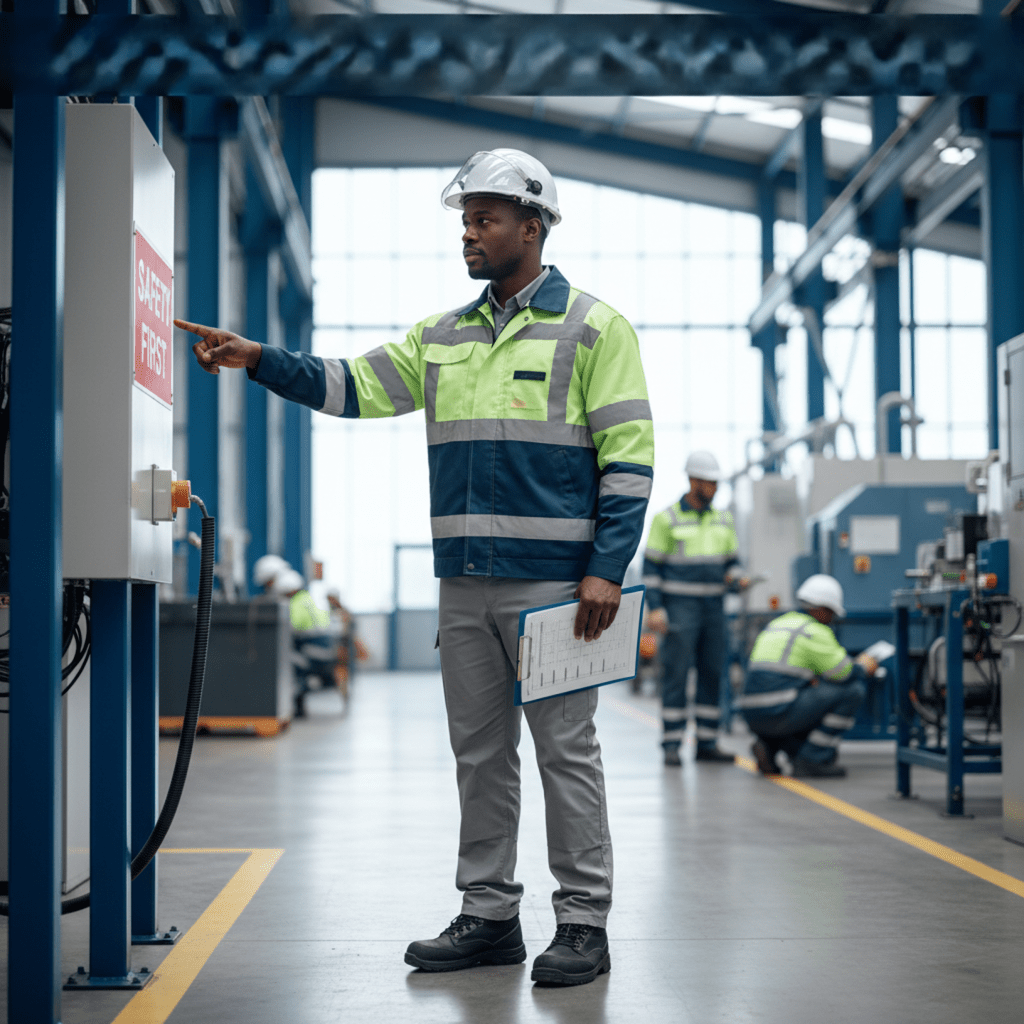Environmental, Health & Safety Solutions That Keep Your Workplace Compliant & Your Team Safe
Certified EHS consultants providing audits, risk assessments, training & compliance support across Kenya.
About Us
AMOZEAL (EHS) CONSULTING LIMITED
We are a professional EHS (Environmental, Health & Safety) consultancy firm offering comprehensive solutions to help organizations manage environmental, occupational safety, and health challenges. Our multidisciplinary team provides strategic support to ensure regulatory compliance and promote sustainable development by integrating environmental, social, and economic goals. We serve clients across all sectors — including manufacturing, construction, education, health, transport, agriculture, and more — delivering practical, world-class solutions tailored to each industry’s needs.


OUR MISSION
OUR CORE VALUES
Accountability
We are dedicated to unwavering responsibility to each other and our clients/partners by excelling in our service delivery by actively following through our tasks and getting things to timely completion.
Customer Forcus
Our client’s success is the measure of our success. We are dedicated to ensure our clients are satisfied and all their needs are met by providing targeted attention to their needs.
Integrity
We are honest, responsible and committed to our work, clients and collegues
Continuous Improvement
We are committed to both incremental and breakthrough improvement by continuously reviewing and optimizing our services/process through constant adaptation, innovation and vigilance to deliver satisfaction to our esteemed clients.
Our Services
The Fire Safety Training course equips trainees with essential knowledge and skills for preventing, managing, and responding to fire emergencies in the workplace. It covers fire hazards, equipment use, evacuation procedures, and alarm systems, aiming to protect lives and property by promoting fire risk awareness and effective response. The training may be basic or specialized for roles like fire wardens and includes both theory and practical exercises. In line with the Fire Risk Reduction Rules 2007 (Rules 20 and 21), every occupier is required to establish a firefighting team, train employees in the safe use of firefighting equipment, and ensure all team members complete a prescribed fire safety course.
The Occupational Safety and Health (First Aid in Workplace) Regulations 2023 Legal notice no. 53 require occupiers to appoint in writing, adequate number of persons who shall administer first aid and be in charge of the first aid box or cupboard as well as ensure training for persons in charge of the first aid box or cupboard by first-aid training institutions approved and authorized by the Director.
First aid training is a 4-day course designed to provides workers with the necessary skills to respond to work-related medical emergencies, covering topics like CPR, wound management, and handling incidents like bleeding and fractures until professional help arrives or before referring casualties to a more responsible person.
The Occupational Safety and Health Act (Safety & Health committee) rules, 2004 requires establishment of OSH Committee for workplaces with 20 or more employees and subject the OSH committee to safety and health training three months after constitution of the committee. The training equips committee members with the knowledge to identify hazards, ensure legal compliance, and implement safety measures in the workplace.
An Environmental Impact Assessment (EIA) is a comprehensive process used to evaluate the potential positive and negative effects of proposed projects—classified as low, medium, or high risk—on the environment, human health, and wellbeing. Its goal is to predict and mitigate adverse impacts while enhancing benefits, ensuring sustainable and informed decision-making. When properly conducted, an EIA safeguards the environment throughout all project stages—from planning and design to operation, monitoring, and decommissioning. Under Kenya’s EMCA EIA/EA Regulations, 2003, all projects likely to have negative environmental impacts must undergo an EIA by registered experts, include public participation, and obtain approval and licensing from the National Environment Management Authority (NEMA) before implementation.
An Environmental Audit (EA) is a systematic assessment conducted by a qualified environmental expert or auditor to evaluate whether a facility’s operations, processes, and environmental management systems comply with environmental laws, standards, and approved plans. It identifies compliance gaps, proposes mitigation measures, and serves as a management tool for assessing environmental risks, optimizing resource use, demonstrating corporate responsibility, and promoting sustainable development. According to Kenya’s EMCA (EIA/EA) Regulations 2003, an EA must be carried out by a registered auditor or firm of experts for both ongoing projects initiated before the regulations took effect and new projects completed after an Environmental Impact Assessment (EIA) study.
SEA is a process used to assess the probable environmental impacts of proposed policies, plans and programs, that ensure decision making process integrates environmental considerations at the onset to promote sustainability.
Its scope tackles wider strategic issues, assessing a range of alternatives and likely mitigation measures to prevent or reduce negative environmental impacts. The aim to ensure environmental protection and sustainable development are considered together with social and economic factors thereby realizing a great level strategic look at government actions.
A noise survey is an environmental assessment that measures and evaluates unwanted sound within a specific area to identify noise pollution, determine its impact on human health and the environment, and ensure compliance with regulatory standards. Under Kenya’s Environmental Management and Co-ordination (Noise Regulations) 2009, project proponents must prevent the generation of loud, unreasonable, or harmful noise that may affect public health or comfort. Facilities with high noise potential must undergo noise level measurements conducted by a lead agency or a NEMA-authorized competent person to confirm adherence to permissible limits.
These programs involve regularly sampling air, surfaces, or other components to detect potential contaminants, such as pathogens or allergens, ensuring hygiene, validating sanitation processes, and ultimately preventing product contamination and ensuring safety.
RAP can be described a comprehensive plan that provides and define completely the resettling or compensation of a population following displacement (affecting livelihoods), loss of income or restricted access to an area as part of a project.
An Occupational Safety and Health (OSH) Audit is a structured evaluation of workplace policies, procedures, and practices to verify compliance with legal and internal safety standards, identify hazards, and assess the effectiveness of safety management systems. As required by the Occupational Safety and Health Act, 2007 (Section 11), every workplace must undergo an annual safety and health audit conducted by an approved advisor, with reports submitted to both the occupier and the Director of Occupational Safety and Health Services. Amozeal (EHS) Consulting, through its DOSHS-approved advisers, conducts these audits by reviewing documentation, inspecting workplaces, and reporting findings to highlight non-compliances and recommend improvements. The team emphasizes professionalism, confidentiality, and client consultation to enhance workplace safety and align with statutory requirements and best industry practices.
A Fire Safety Audit is a structured evaluation of an organization’s fire prevention and protection systems, procedures, and regulatory compliance to identify hazards, assess effectiveness, and ensure occupant safety. As stipulated in the Fire Risk Reduction Rules, 2007 (Rule 36), occupiers must conduct a fire safety audit at least once every twelve months through a DOSHS-approved fire safety auditor. The process involves reviewing fire prevention measures, inspecting fire protection systems (such as alarms, sprinklers, and extinguishers), assessing evacuation plans and staff preparedness, and examining the building’s structure. The goal is to identify risks, recommend improvements, and enhance fire safety to protect lives and property. Amozeal (EHS) Consulting ensures professional, confidential, and standards-based audits, offering expert advice aligned with statutory requirements and best practices.
A risk assessment in occupational safety and health is a structured process used to identify workplace hazards, evaluate their likelihood and severity, and implement control measures to minimize or eliminate risks to an acceptable level. According to the Occupational Safety and Health Act, 2007 (Section 6), every occupier must conduct appropriate risk assessments, adopt preventive and protective measures, and ensure all equipment, processes, and substances under their control are safe and compliant with the law, submitting a report to the local occupational safety and health office. Amozeal (EHS) Consulting Limited, through its team of approved auditors, conducts comprehensive risk assessments across various sectors, following a continuous process of hazard identification, risk evaluation, control implementation, and review. The ultimate goal is to safeguard workers’ health and safety, maintain compliance, and promote a proactive safety culture within workplaces.
In Noise level measurements sound intensity is quantified using the decibel (dB) scale. A decibel scale is a logarithmic unit that reflects humans hearing sensitivity. The unit is often expressed as decibels A (dBA), which adjusts the measurement to mimic how the human ear perceives different frequencies. To undertake noise level measurements our noise level surveyors, use a device (sound level meters/noise meters) that work by capturing sound pressure, conversion to electrical signal and display the results in decibels aiding in accurate assessment of noise levels in various sections/environments in a workplace.
The Factories and Other Places of Work (Noise Prevention and Control) Rules 2005 require occupiers to to carry out measurements of noise at least once in every period of twelve months in order to determine the prevailing noise conditions.



